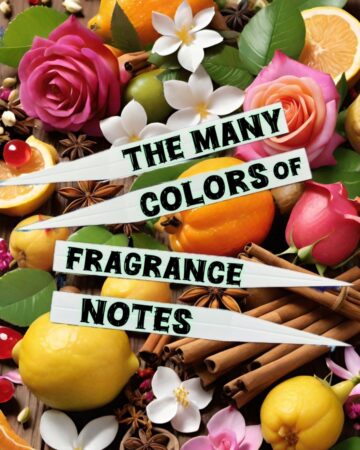
The Many Colors of Fragrance Notes via For the Scent of It
“I’m not a huge fan of the listed notes…so, I don’t think I’ll like this perfume.”
“This perfume only has 4 fragrance notes… but I smell so much more, or different.”
I’m sure you’ve all heard, said, or thought something along these lines. Show of hands out there who has judged a perfume based solely upon the fragrance notes listed only to prove themselves wrong when they smell it. That’s a lot of hands! No worries. Mine’s up too.

That’s a lot of Hands via Unsplash
Fragrance notes, and the colors they exhibit on the olfactory pyramid, cause a good amount of uncertainty in the world of perfumery. Never underestimate just how much power they hold over our perception of a fragrance. Truth is, many look at them and decide whether they’ll like, and even purchase, a given fragrance. This has become more apparent in the modern age of perfumery, especially after Covid, where people really began purchasing their fragrances online, scent un-smelled. Aside from reviews, the fragrance notes advertised for a perfume can often be their selling point. They tend to go hand in hand with the name and concept of the perfume and direct what many people smell. You read “Raspberry”; you expect to smell a Raspberry fragrance note. The perfume’s name contains the word “Rose”, you probably expect there to be rose in the fragrance notes. Despite this, fragrance notes and the “perfume pyramids” they’re painted on can often lead to some misperception. We’re going to discuss it. So, let’s climb this colorful pyramid!

Painted Olfactory Pyramid via For the Scent of It
A lot of people see the fragrance notes of a perfume believing that they ARE the perfume. Sometimes that is not the case. I keep hearing about these so-called “phantom notes” where people smell aromas that aren’t in the note breakdown. These phantom notes are actually the rest of the fragrance’s formula you’re smelling. For instance, say you see Bergamot, Lavender, Tonka Bean and Sandalwood listed. These four ingredients or *their respective aromas* are likely in the formula, but there might also be 40 other raw materials providing body, nuance, and life to the fragrance. These four are just what the brand wants to be the focus. This is where the misconception happens. Typically, when you see “fragrance notes”, this shouldn’t be confused with “ingredients” or “raw materials”. Most often, the olfactory pyramid on which fragrance notes sit are a series of fruits, flowers, woods, spices, musks, fantasy notes, etc. etcetera. Most of these fragrance notes are often comprised of a variety of raw materials. Keep in mind though, sometimes a fragrance note is a raw material in the formula. You may sometimes see ingredients and materials a perfumer used in the formula listed as a note, such as Iso E Super® in Molecule 01 (Escentric Molecules, 2006) or Cashmeran® in Alien Eau de Toilette (Thierry Mugler, 2009). This is especially common when a specific raw material is an important part of the scent’s signature.
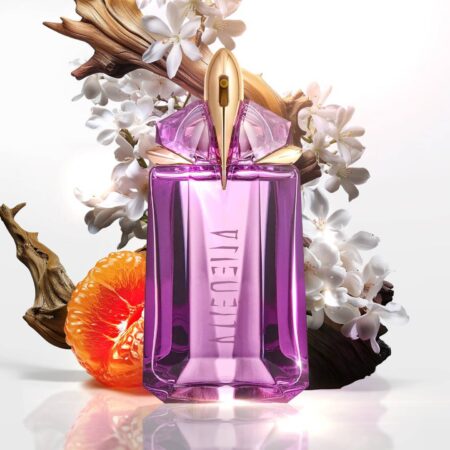
Alien EDT via Mugler©
You could have the same exact perfume, and two brands might list completely different fragrance notes. A white floral note of Jasmine and Ylang-Ylang for one brand might be Solar Notes to another. Scent is very subjective, and because of this, people will often smell what they’re told they’re smelling. Many brands take note (punny) of this and apply it to great extent. For instance, one might create a perfume using just two of the previously mentioned materials, Iso E Super® and Cashmeran®, and declare Spices, Oud, Cedar, Cashmere Wood, and Musk as the fragrance notes. As unbelievable as it may sound, because of the materials’ abstract aromas, some might be convinced they smell all 5. This is the power of perception and fantasy in perfumery. This can also be a big problem for some people. There is a fine line between fantasy and reality. A brand can list Oud in a perfume when, in fact, the formula only contains a simple accord of Cashmeran®, Cypriol and Castoreum. Some might argue the Oud is a fantasy accord in many perfumes…others REALLY do use REAL oud and agarwood.
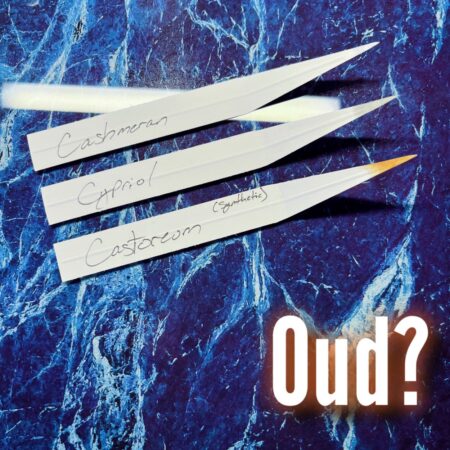
Cashmeran® Cypriol Castoreum… Oud? Moillettes via For the Scent of It
For many perfumes, the “note pyramid” probably won’t even get decided upon until the formula is finalized. I imagine there are some perfumes out there that begin with many of the desired fragrance notes that are to be created by a perfumer. This approach can limit the perfumer’s creativity. Perfumes are created through a balance of proportions and the delicate blending of sharp contrasts and similarities. This is why a fine fragrance with only a few notes, like Bergamot, Vetiver, and Patchouli for instance, doesn’t smell simply of these three. You need the added complexity of other raw materials to bring body, add nuance, and most of all, create a memorable signature. Most perfumes will begin with a brief or concept. The brief might list a few desirable notes for the fragrance, or zero, leaving it completely open to the perfumer’s imagination. Some perfumes can begin with the vaguest of concepts. I had a brief proposed to me once that simply said, “make a perfume for the modern man”. That’s it.
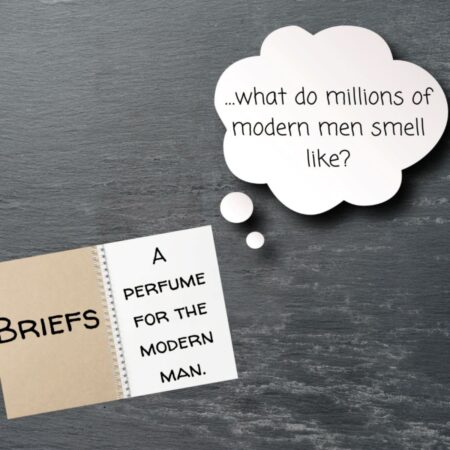
A “Brief” Thought via For the Scent of It
Just as an example, let’s say a brief says, “capture the age of innocence”. The perfumer would begin creating trials that attempt to capture the idea, possibly with very different scent profiles using very different materials for each approach. For the “age of innocence”, maybe one profile would be a delicate skin scent of musk and iris, while another is a red rose in a mother’s hand. Depending on the scent, the accords, the materials, etc. the final fragrance notes may be very different from the beginning. Once a formula is chosen, so too are the fragrance notes decided.
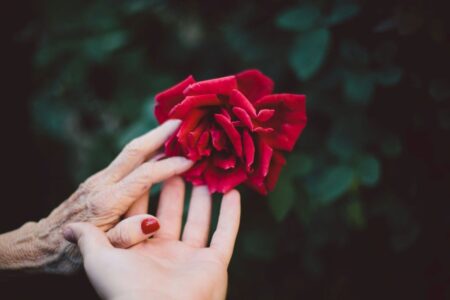
Via Unsplash
As the perfumer,marketing team and all the above at For the Scent of It, it can help having my head in the whole process. I come up with the concept and figure out how I want to capture that in a perfume. I’ll often have some of the notes that I want to be featured decided upon in the beginning, but many of them are created along the way. Take Crème de Bergamot (For the Scent of It, 2021) I knew I wanted a creamy take on a bergamot citrus fragrance with floral notes and soft woods. As I began, different materials were introduced or removed. What began with a nutmeg note in my first few trials was removed entirely and replaced with pink pepper for its floral shades and ability to make the bergamot pop. The addition of Jasmine Absolute became so prominent in the story I was creating, it deserved to have a place at the heart of the pyramid. It wasn’t until the final formula was complete and I had all the materials and ingredients chosen that I “painted the pyramid”, if you will, choosing the fragrance notes and factoring them into the story I wanted to tell. Despite there being well over 30 raw materials in the formula, there are only 8 fragrance notes. But those 8 are the most impactful and tell the story. Behind them are the multitude of supporting materials that add body, nuance, volume, character, etc.
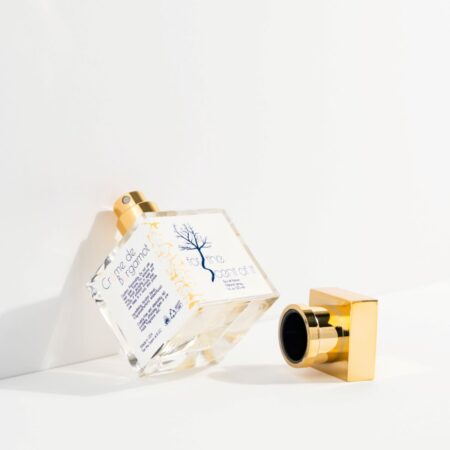
Crème de Bergamot via For the Scent of It
So, as you can see, “fragrance notes” are a means of communication, creativity, marketing and occasionally just a gimmick. An “Ambroxan” fragrance note in one brand’s perfume might be marketed as “Ambergris” by the next brand. The “Musk” fragrance note you love in one perfume may be very different from another’s. A “Jasmine” fragrance note of one perfumer will be different from another perfumer’s. If a perfume doesn’t have vanilla listed in the base but you’re so sure you smell vanilla, you might be right. There could be 4% Vanillin and 0.5% Vanilla Absolute in the formula, but the brand just didn’t list vanilla in the fragrance notes.
When it’s all said and done, some brands can and will inevitably paint their pyramids in whatever colors they feel fit. Relying on the painted fragrance notes to tell the whole story isn’t always going to work. Your best bet is to simply Follow Your Nose. It might surprise you.
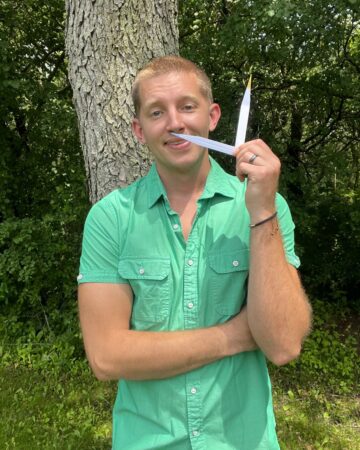
Michael Schrammel of For the Scent of It
Michael Schrammel is a Contributor for www.cafleurebon.com
Michael is the owner, perfumer and everything in between at For the Scent of It perfumes. His persistence, creativity, and desire to create an atmosphere drive his fragrance development. Self-trained, Michael started studying the art of perfumery in 2015 before launching For the Scent of It perfumes in 2021. visit his shop at www.forthescentofit.com
All photos are owned by For the Scent of It perfumes, unless otherwise stated.
Thanks to the generosity of Michael Schrammel, we have a FULL 30ml BOTTLE of YOUR CHOICE of these four FOR THE SCENT OF IT FRAGRANCES from the Lucid Dreams Collection
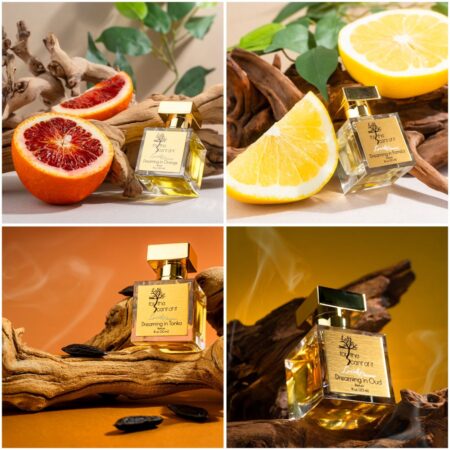
Lucid Dreams Collection Collage
Dreaming in Oud: Fragrance Notes: Cardamom Abs, Cinnamon, Orange, Carrot Seed; Heart: Agarwood Co2, Rose Kazanlak, Iris, Oak; Base: Oud, Vanilla, Sandalwood, Tonka Bean, Benzoin
OR
Dreaming in Orange: Fragrance Notes: Blood Orange, Mango Juice, Coriander CO2, Marigold, Osmanthus, Orange Rose, Ambrette, Amber, Vanilla, Cistus
OR
Dreaming In Pomelo: Fragrance Notes: Pomelo, Black Currant, Rhubarb, Pomelo Blossom, Haitian Vetiver, Lavender, Amber Waves of Musk, Sandalwood
OR
Dreaming in Tonka: Fragrance Notes: Cinnamon, Spiced Almonds, Lavender, Calabrian Bergamot, Sarsaparilla CO2, Cedar, Rose, Amyris, Tonka Bean, Bourbon Vetiver, Amber, Sandalwood
Please register here or your comment will not count. To be eligible, please leave a comment with what intrigues you about fragrance notes in its many guises, indicate that you are in the Continental United States and which you choose of the four For The Scent Of It Lucid Dreams Parfums, (based on the notes if you are not familiar with them) you would want to win. Draw closes 10/22/2024
Please like The Series on Facebook here and your comment will count twice.
Follow us on Instagram @cafleurebonofficial @forthescentofit
This is our Privacy and Draw Rules Policy
We announce the winners only on site and on our Facebook page, so “like” Cafleurebon and use our Blog FEED… or your dream prize will be just spilled perfume
